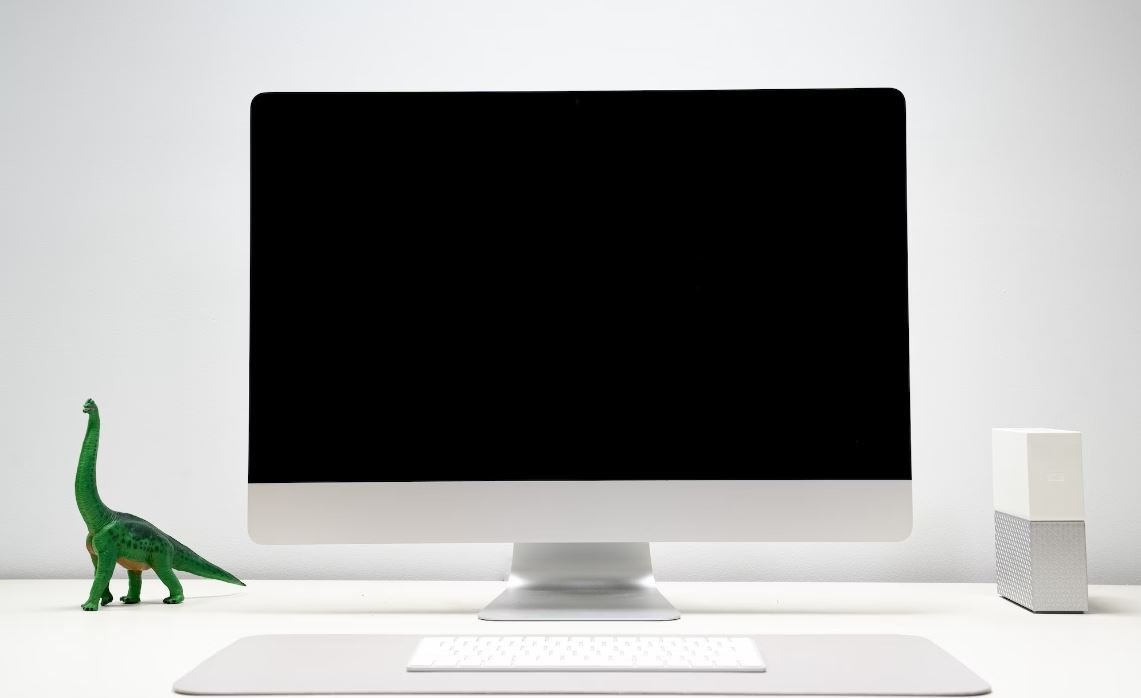Generative Art Guide
In the digital age, technology has opened up new possibilities for artistic creation, and generative art has emerged as a fascinating genre. Inspired by algorithms and mathematical patterns, generative art is an ever-evolving form of expression that combines art and computer science. In this guide, we will explore the world of generative art, its techniques, and its impact on the art world.
Key Takeaways:
- Generative art is a form of artistic expression that relies on algorithms and mathematical patterns.
- It combines art and computer science to create dynamic and ever-evolving artwork.
- Generative art can be created using various techniques, such as procedural generation, randomization, and artificial intelligence.
- It has made a significant impact on the art world, challenging traditional notions of authorship and pushing the boundaries of creative possibilities.
What is Generative Art?
**Generative art** refers to artworks that are created using algorithms or rules set by the artist to generate compositions, images, or music. *These algorithms can produce an infinite number of unique variations, making each artwork a one-of-a-kind creation.* Generative art often blurs the line between artist and programmer, as artists are involved in designing the rules and algorithms that govern the creation process. This blend of art and computer science allows for highly complex and dynamic artworks.
Techniques in Generative Art
There are several techniques commonly used in generative art:
- Procedural Generation: Artists create rules or procedures for generating artwork, allowing for a wide range of variations.
- Randomization: Random elements are introduced into the creation process, leading to unpredictable and unique outcomes.
- Artificial Intelligence: Machine learning algorithms can be used to create generative art, enabling artworks to learn and evolve over time.
The Impact of Generative Art
Generative art has had a significant impact on the art world, challenging traditional notions of authorship and expanding the possibilities for artistic expression. *By employing algorithms and mathematical patterns, generative art can create intricate and complex compositions that would be difficult for a human artist alone to achieve.* Some key impacts of generative art include:
- Democratizing Art: Generative art allows anyone with access to technology to become an artist and create unique works.
- Pushing Creative Boundaries: By embracing algorithms and computational creativity, generative artists are constantly pushing the boundaries of what is possible in art.
- Exploring New Aesthetics: Generative art often leads to the creation of entirely new visual aesthetics that challenge traditional concepts of beauty.
- Recontextualizing Authorship: Generative art blurs the line between artist and programmer, raising questions about authorship and ownership in the digital age.
Generative Art Examples
Here are three examples exemplifying the diversity in generative art:
| Artwork | Artist | Technique |
|---|---|---|
| “A-Volve” | Karl Sims | Artificial Life |
| “Emergence” | Casey Reas | Processing |
| “Andreas I” | Sol LeWitt | Instruction-based |
The Future of Generative Art
Generative art continues to evolve and has a promising future ahead. As technology advances and Artificial Intelligence becomes more sophisticated, the possibilities for generative art are expanding. *With AI, generative art is likely to become even more complex and interactive, blurring the boundaries between the artist, the artwork, and the viewer.* This innovative form of artistic expression is set to continue challenging traditional artistic conventions and inspiring new generations of artists.

Common Misconceptions
Generative Art is Made by Random Algorithms
One common misconception about generative art is that it is created solely by random algorithms. While randomness can certainly play a part in generative art, it is just one aspect of the overall process. Artists often use algorithms to generate initial patterns or structures, but they also play an active role in shaping and refining the output. Artists make deliberate choices in terms of color, composition, and other aesthetic elements to create a coherent and visually pleasing artwork.
- Generative art involves both randomness and deliberate decision making.
- Artists use algorithms as a tool, but they have control over the final outcome.
- Generative art requires artistic skill and creativity, beyond just programming knowledge.
Generative Art is Easy to Create
Another misconception about generative art is that it is easy to create. While advancements in technology have made it more accessible, creating high-quality generative art still requires skill and dedication. Artists need to have a solid understanding of programming languages, algorithms, and artistic principles. They must also spend significant time experimenting, refining, and iterating their artwork to achieve the desired results.
- Creating generative art requires a combination of technical and artistic skills.
- Artists need to invest time and effort in experimentation and refinement.
- Generating high-quality generative art is not a quick and easy process.
Generative Art is Just Computer-Generated Images
Some people mistakenly believe that generative art is limited to computer-generated images on a screen. While digital mediums play a significant role in generative art, it is not restricted to them. Generative art can also be created using traditional art mediums, such as painting, sculpture, or even music. Artists can use generative algorithms as tools to help them create unique and innovative artworks in various forms.
- Generative art is not limited to digital mediums.
- Artists can use generative algorithms in traditional art forms.
- Generative art can extend beyond visual art to include other artistic expressions like music.
Generative Art is Just About Creating Pretty Patterns
While generative art often results in visually appealing patterns and designs, its purpose goes beyond creating aesthetically pleasing artworks. Generative art can explore complex concepts, tell stories, or provoke emotional responses. Artists can use generative algorithms to create interactive installations, generative poetry, or even dynamic data visualizations. The possibilities of generative art are vast and extend beyond creating pretty patterns.
- Generative art can explore concepts and tell stories.
- Artists can create interactive installations using generative algorithms.
- Generative art can be used for data visualization and exploration.
Generative Art Lacks the Human Element
Another misconception surrounding generative art is that it lacks the human element or the personal touch of the artist. However, generative art is ultimately a collaboration between the artist’s creativity and the generative algorithms at play. Artists infuse their ideas, emotions, and personal style into the algorithms, shaping the final output. Generative art is a powerful medium that combines the creativity of both humans and machines.
- Generative art is a collaboration between the artist and the algorithms.
- Artists inject their personal touch and style into generative art.
- Generative art combines human creativity with the capabilities of algorithms.

The History of Generative Art
Generative art has a rich and diverse history spanning several decades. This table highlights the key milestones in the evolution of generative art.
| Year | Event |
|---|---|
| 1965 | The first computer-generated artwork, “Random War” by A. Michael Noll, is created. |
| 1979 | Harold Cohen develops the first successful computer program capable of creating original artworks. |
| 1986 | The Boston Museum of Fine Arts holds the first exhibition solely dedicated to generative art. |
| 1990 | Karl Sims’ “Genetic Images” wins an Academy Award for technical achievement. |
| 2007 | Generative art gains mainstream recognition when Christie’s auction sells “Portrait of Edmond de Belamy” created by an algorithm. |
Top Influential Artists in Generative Art
This table showcases some of the most influential artists who have made significant contributions to the field of generative art.
| Artist | Notable Artworks |
|---|---|
| Vera Molnar | “Random Dots,” “Dislocated Squares,” “Chess Problem” |
| Casey Reas | “Processing,” “Scribble,” “Intersection Series” |
| Marius Watz | “Growth Rendering,” “Variations of a Circle,” “Magnus Opus” |
| Manfred Mohr | “Cube-Screen Rotations,” “P-997-A3,” “P-861” |
| Camille Utterback | “Text Rain,” “Habitual,” “Entanglement” |
Programming Languages Used in Generative Art
Generative artists utilize various programming languages to create their visually captivating works. This table outlines some of the popular programming languages employed in generative art.
| Language | Advantages |
|---|---|
| Processing | Beginner-friendly, extensive documentation, robust community support |
| JavaScript | Web compatibility, interactivity, integration with HTML5 canvas |
| Python | Easy to learn, versatile libraries, scientific computing capabilities |
| Max/MSP | Real-time audiovisual interactivity, modular design approach |
| C++ | High performance, low-level control, extensive libraries |
The Impact of Generative Art in Various Industries
Generative art extends beyond the realm of fine arts and has found applications in numerous industries. This table provides a glimpse into the impact of generative art across different sectors.
| Industry | Applications |
|---|---|
| Architecture | Parametric design, generative building facades, structural optimization |
| Fashion | Pattern generation, textile design, digital fabrication for apparel |
| Advertising | Dynamic visual branding, interactive digital campaigns |
| Motion Pictures | Procedural animation, visual effects, simulated environments |
| Education | Teaching computational thinking, inspiring creativity in students |
The Role of Artificial Intelligence in Generative Art
Artificial intelligence (AI) has greatly influenced the field of generative art, enabling new possibilities and techniques. This table explores the innovations in generative art driven by AI technologies.
| AI Technology | Artistic Applications |
|---|---|
| Generative Adversarial Networks (GANs) | Creating realistic artworks, style transfer, image generation |
| Reinforcement Learning | Interactive art, autonomous artistic agents, adaptive composition |
| Neural Style Transfer | Applying artistic styles to images, transforming photographs |
| Evolutionary Algorithms | Evolutionary art, evolving shapes, patterns, and colors |
| Deep Generative Models | Generating music, poetry, storylines |
Generative Art Installations and Exhibitions
The immersive nature of generative art installations captivates audiences worldwide. This table showcases some extraordinary generative art installations and their respective locations.
| Installation | Location |
|---|---|
| “Ryoji Ikeda: Test Pattern” | Zeitz Museum of Contemporary Art Africa – Cape Town, South Africa |
| “TeamLab Borderless” | MORI Building DIGITAL ART MUSEUM – Tokyo, Japan |
| “Random International: Rain Room” | Museum of Modern Art (MoMA) – New York, USA |
| “Open Sky” | Tashkeel – Dubai, United Arab Emirates |
| “TeamLab: Universe of Water Particles in the Tank” | GOMA – Brisbane, Australia |
Generative Art Tools and Software
To bring their imaginative visions to life, generative artists rely on a wide range of tools and software. This table highlights some of the essential software utilized in generative art.
| Software | Description |
|---|---|
| Processing | An open-source programming language and development environment for creating interactive visuals. |
| NodeBox | A Python-based application that allows artists to create complex visual designs and animations. |
| Cinder | A C++ framework for creative coding, providing a powerful toolkit for graphics and audio processing. |
| Unity | A widely-used game engine that has been adopted for generative art due to its real-time rendering and scripting capabilities. |
| OpenFrameworks | An open-source toolkit designed for creative coding, enabling artists to build interactive and multimedia applications. |
Generative Art in Public Spaces
Generative art has increasingly found its way into public spaces, enriching urban environments and engaging communities in dialogue. This table highlights notable generative art installations in public spaces.
| Installation | Location |
|---|---|
| “The Pool” by Jen Lewin | Pershing Square – Los Angeles, USA |
| “Wave” by Tim Thompson | Piers 15/17 – San Francisco, USA |
| “Liquid Shard” by Patrick Shearn | Pershing Square – Los Angeles, USA |
| “Genesis” by Miguel Chevalier | Grand Palais – Paris, France |
| “Solar Equation” by Rafael Lozano-Hemmer | Museum of Contemporary Art Australia – Sydney, Australia |
The Future of Generative Art
The future of generative art holds immense potential as technology advances and new creative possibilities emerge. From advancements in AI to novel mediums for artistic expression, generative art is poised to continue pushing boundaries and captivating audiences worldwide.
Frequently Asked Questions
What is generative art?
How does generative art differ from traditional art?
What are some techniques used in generative art?
Which software can be used to create generative art?
Can generative art be interactive?
Is generative art considered a form of artificial intelligence?
Can generative art be reproduced or replicated?
Can generative art be sold or exhibited?
What are the challenges faced by generative artists?
Can anyone create generative art, or is programming knowledge required?




